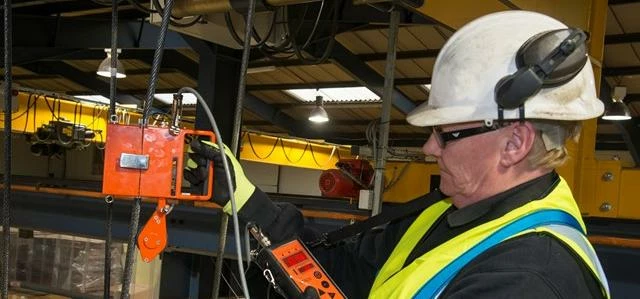
Partner Article
Metals industry wired for safety
Metal manufacturing requires a high level of caution and operational precision often under tough and volatile conditions. A lapse in concentration or faulty crane equipment could lead to operational downtime, injuries or far worse.
According to a survey conducted by downtime expert Don Fitchett, founder of the Business Industrial Network, the average hourly downtime rate per year within the metals industry is 636 hours and recent GB estimates show that over the past five years, second to food manufacturing, metal fabrication, had the most fatal injuries.
The chance of unplanned downtime and accidents resulting from defective cranes used for metal manufacturing could be reduced by new wire rope scanning technology from SCX.
Ray Fletcher, Director of Street CraneXpress (SCX) said: “It is crucial that condition monitoring is performed in order to improve safety and avoid costly downtime so that these alarming figures will not be a future concern.”
The new Wire Rope NDT (Non-Destructive Testing) service from SCX allows engineers to perform a full cross-section inspection of a crane’s wire ropes in order to identify a problem in time to take preventative action - thus minimising the chance of downtime and injuries.
Until now it has been impossible to see inside a crane’s wire ropes without cutting through and permanently destroying them. However, the new Wire Rope NDT service uses magnetic flux technology which enables engineers to see further than the human eye - throughout the entire length of the crane’s wire ropes to pre-empt any potential defects.
“We have already worked with several manufacturers to prevent a potential problem after NDT scans revealed unexpected damage,” said Mr Fletcher. “As well as helping to reduce the risk of failure and preventing downtime, use of the system ensures that cranes are running in prime condition and, above all, safely.”
The scanning technology is part of SCX’s Advanced Crane Diagnostics – the new name for its condition monitoring services, which analyse the crane using thermal imaging, vibration monitoring and gearbox oil analysis.
“Each Advanced Crane Diagnostics package can incorporate any or all of these techniques and, most importantly, it is tailor-made to individual crane criticality,” said Mr Fletcher. He emphasised that early diagnosis is especially important in the metal manufacturing industry due to fast crane deterioration as a result of continuous usage. “Advanced Crane Diagnostics is a small outlay which provides huge payback, through savings on downtime and repair costs,” he added.
This was posted in Bdaily's Members' News section by Image Line Communications .








 How to make your growth strategy deliver in 2026
How to make your growth strategy deliver in 2026
 Powering a new wave of regional screen indies
Powering a new wave of regional screen indies
 A new year and a new outlook for property scene
A new year and a new outlook for property scene
 Zero per cent - but maximum brand exposure
Zero per cent - but maximum brand exposure
 We don’t talk about money stress enough
We don’t talk about money stress enough
 A year of resilience, growth and collaboration
A year of resilience, growth and collaboration
 Apprenticeships: Lower standards risk safety
Apprenticeships: Lower standards risk safety
 Keeping it reel: Creating video in an authenticity era
Keeping it reel: Creating video in an authenticity era
 Budget: Creating a more vibrant market economy
Budget: Creating a more vibrant market economy
 Celebrating excellence and community support
Celebrating excellence and community support
 The value of nurturing homegrown innovation
The value of nurturing homegrown innovation
 A dynamic, fair and innovative economy
A dynamic, fair and innovative economy